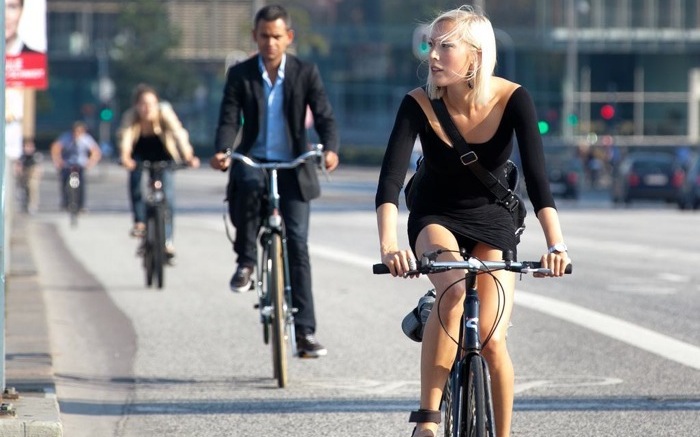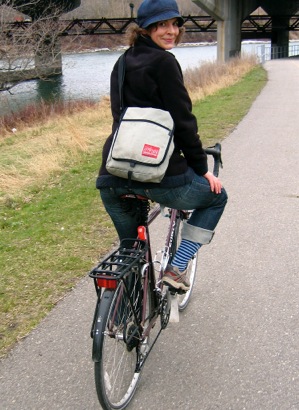It seems commuting by bike makes more sense every year as vehicle costs rise and demands on our time increase. One answer more and more people are turning to: commuting by bicycle. A good bike can change your commute from an inconvenience to a healthy, money-saving workout - and a fun way to clear your mind.
But there’s a lot to consider when choosing a bike - after all every ride and rider is different - so how do you choose your perfect budget commuter? This is where a good local bike shop (LBS) will come in handy. A cyclist's friend will be a great help but your LBS will be invaluable, getting you on both the right kind of bike - and the right size - offering knowledge and expertise both when first choosing your bike and throughout your cycling life.
Here are a few ideas to help you get out of the car (or bus) and onto a bike for the daily ride to work.
Budget
When considering your budget, bear in mind the savings you can make over a year or two of regular cycle commuting. It makes good sense to spend a little more on a bike that makes the ride easier, faster & more enjoyable. Plus those few extra dollars mean the bike will ride better, and for longer.
If you’re new to riding you’ll also likely need more than just the bike. A helmet is mandatory in many parts of the world and common-sense everywhere. You may also need a lock, spare tube, pump, etc. Remember to allow for these in budgeting.
For some more detail check out: "The Commuter - What to look for in a good commuter bike"
Suitability
Any bike has to suit the job you’re asking it to perform. There are many factors that impact the decision making process and only you know what your commute involves - distance, hills, road surface, cycling experience & fitness are all variables that change with every bike purchase. Be open with the staff assisting you at the LBS so they can give you the right advice.
Hybrids are a common starting point for commuters - and for good reason - but whether it’s right for you depends on all the variables listed here.
DID YOU KNOW? You might find bikes on sale at discount department stores and at first glance they may look much cheaper than the bikes at the lobal bike shop, but that isn’t a true comparison. Discount store bikes - though are exceptions - can range from rubbish to downright dangerous. If you’re comparing value, make sure it’s a true apples-for-apples comparison of the bike and all the support services your LBS offers!
Likewise, buying second-hand can mean savings, but you can never be sure of a used bike’s history and used bikes will mean a compromise in one or more of the qualities listed here. And of course they come with no warranty or shop support.
If you’re serious about commuting be very careful around these options.
Not sure which outlet to use? Check out: "Local Bike Shop vs Supermarket vs Online Store"
Whatever you choose, the bike has to fit you. The right sized bike will be more efficient, easier to control and much more fun to ride. Conversely, buying the wrong sized bike could result in overuse injury (think knee / back pain) or an avoidable crash. There’s more on bike fit here, or your local bike shop will be happy to help fit you properly.
Another aspect of Fit is comfort. Even though a bike may be the right size for you, some bikes are more comfortable than others for a given rider. Make sure that the bike you choose is one that you’ll be comfortable on for your commute - or longer - not just a five minute test ride.
Frame Material
Though frame material (what the actual frame is made of) is often the first-mentioned feature of a bike, in my experience it’s less than critical. In a discussion of budget commuters the two main materials - Aluminium & Steel - will both do a great job provided the bike is well designed and made. A well-made steel bike can be an awesome and faithful ride, while in and of itself an aluminium frame is no guarantee of lighter weight. Look for a well-designed, well-made bike regardless of the frame material.
Components
The components attached to the frame - or “Spec” - is critical to the performance of a bike. Once you’ve narrowed your selection, talk with the staff at your LBS about the differences between the short-listed bikes, e.g. "How do these wheels / shifters / derailleurs compared to those?"
A point many entry-level cyclists are unaware of is the increase in performance a few extra dollars gets them. Just a small increase in spend on a budget commuter will bring significant upgrades in performance and weight-savings. Adding just $100 to your budget should see you jump up not just one, but two component levels. Better shifting, braking, weight-savings, increased bling factor - all benefits which cost literally thousands on top-end bikes!
Conclusion
In the end, the best bike for you is the one that you’re going to find reasons to go ride. If your bike absolutely has to be a particular style, look or color then so be it - don’t buy something that you’re not 100% happy with.
This year sees a wider range of bikes in more styles, colors & at better value than ever before so grab this opportunity and choose a bike for your commute. Your health, fitness, and bank balance will be better for it.




